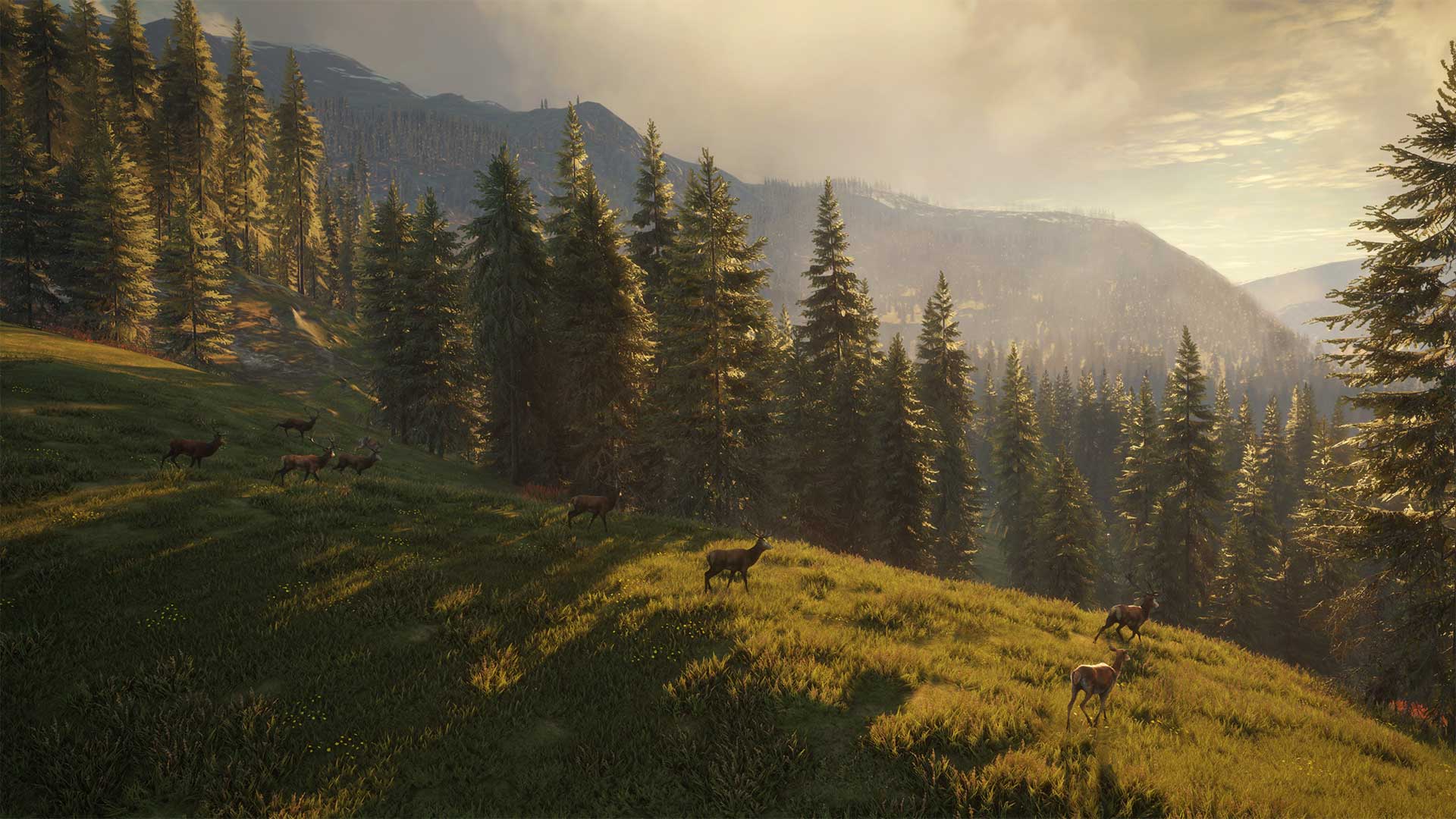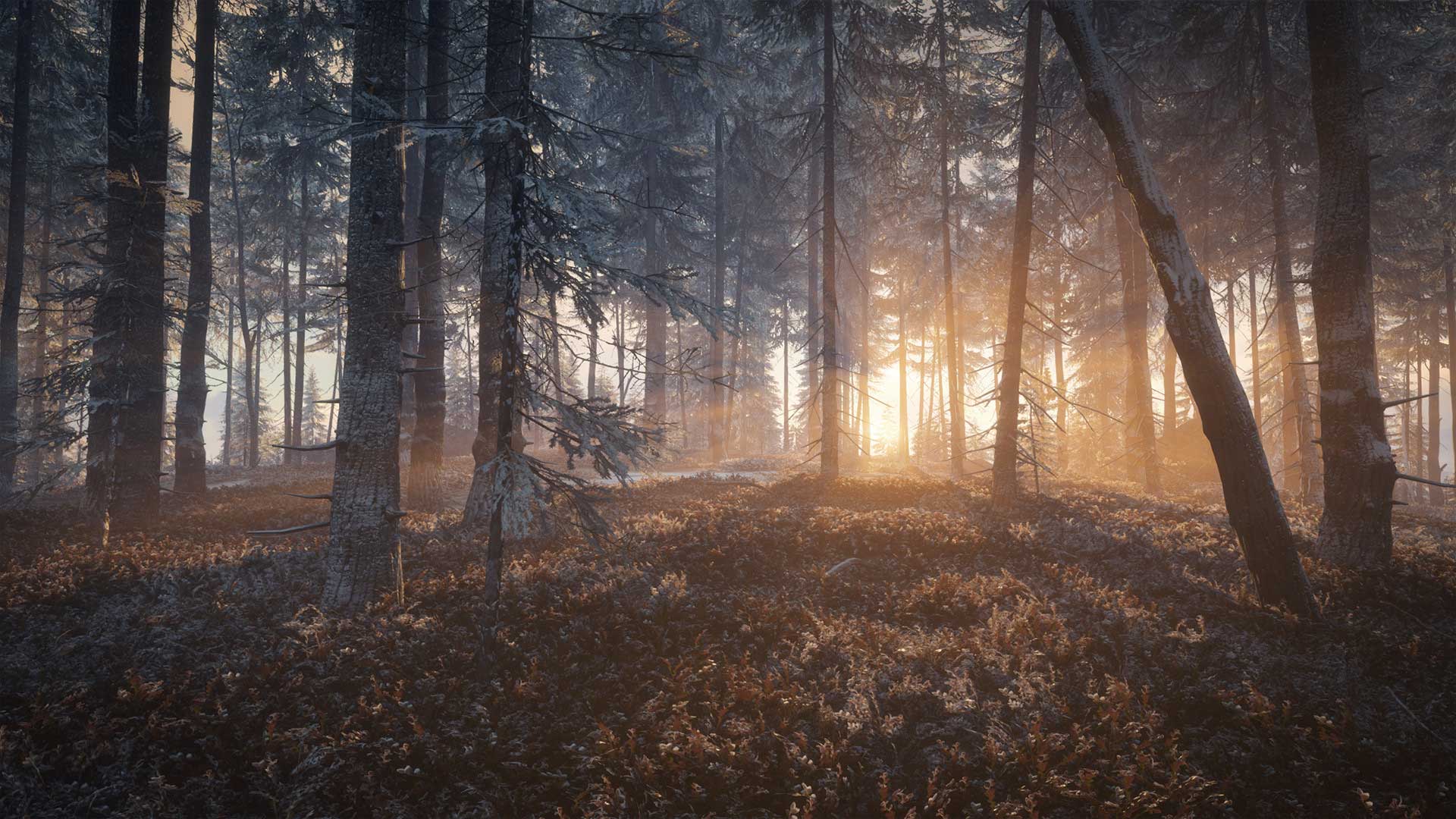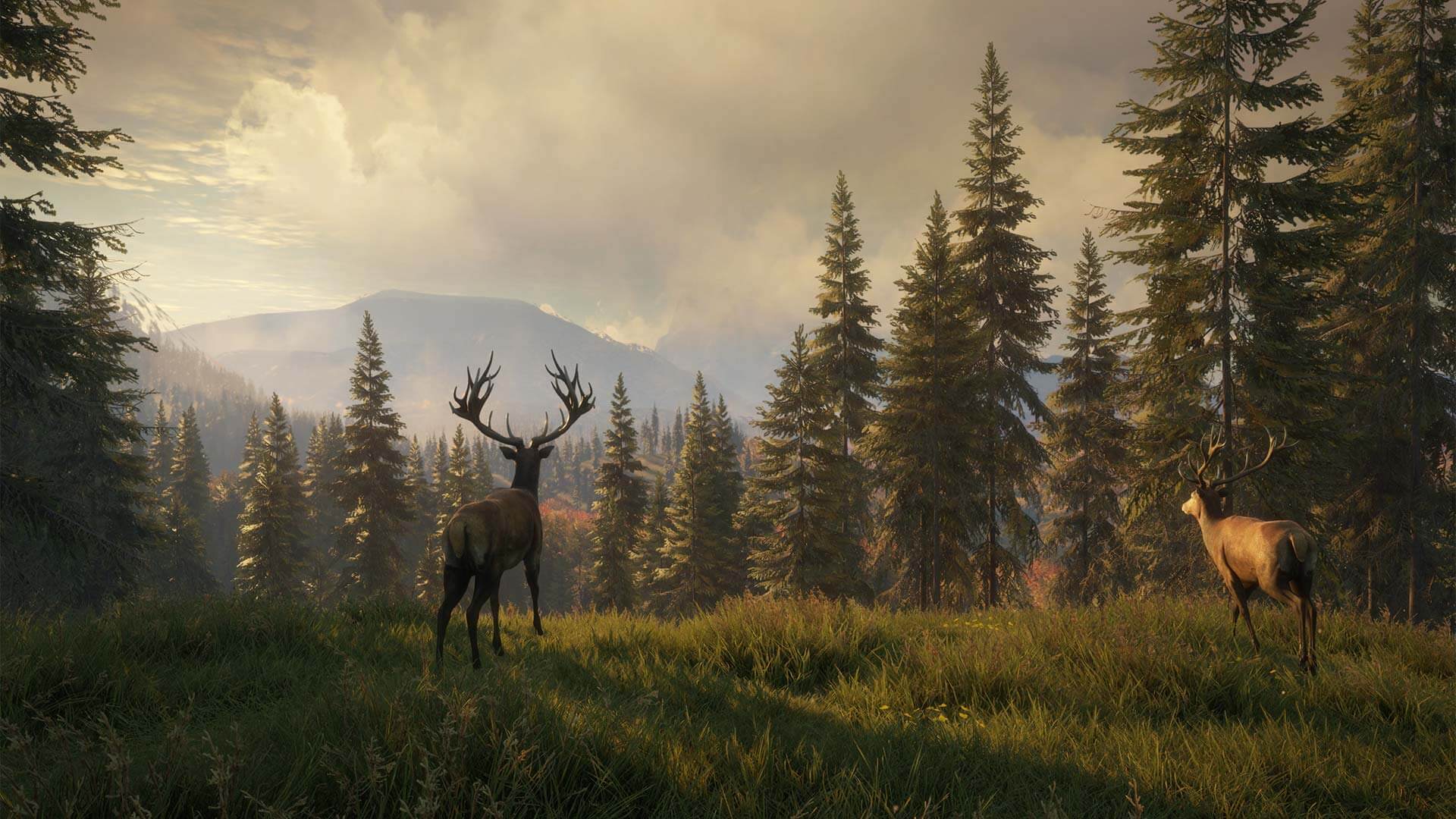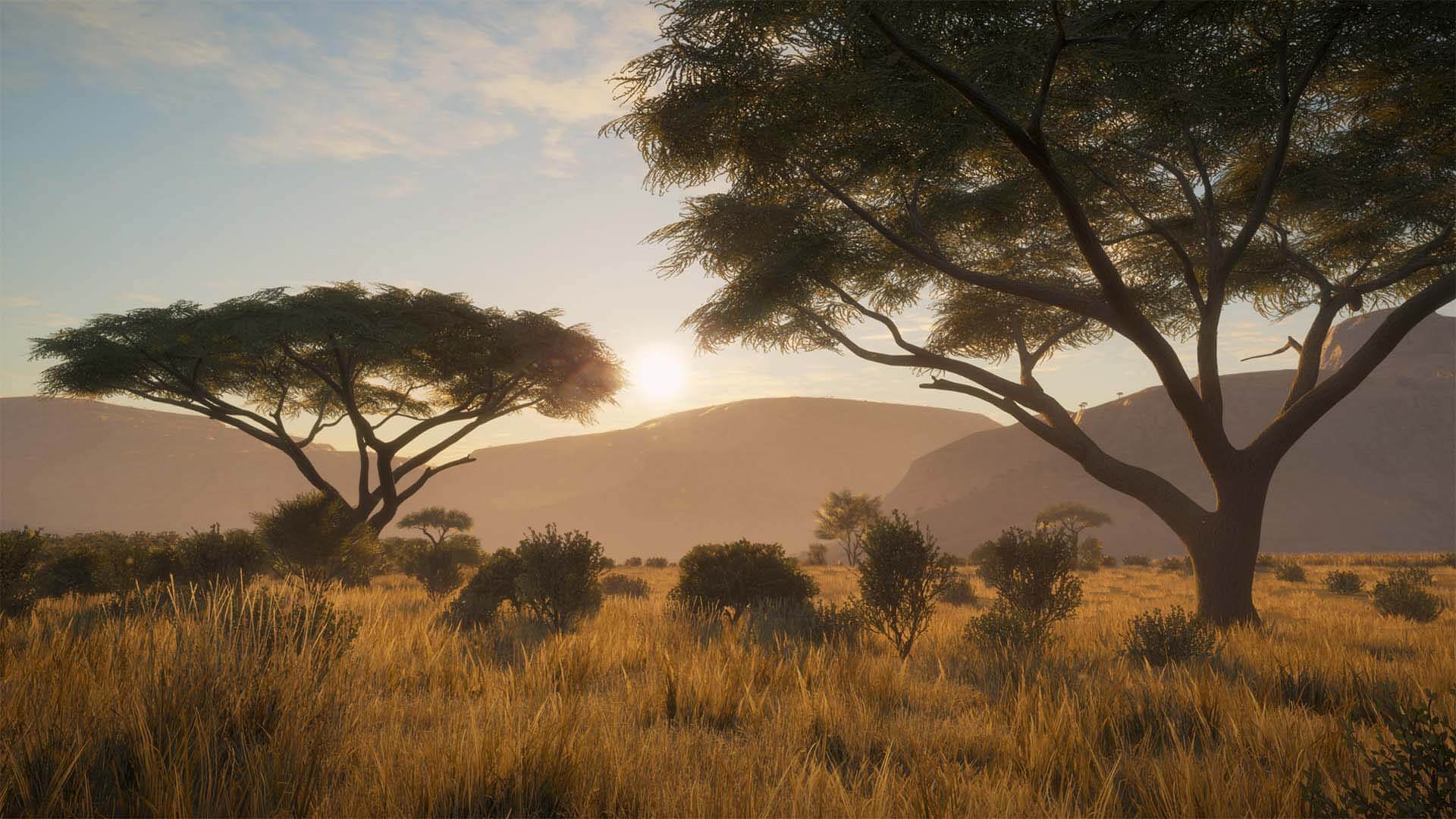How The Hunter: Call of the Wild devs create the prettiest forests
The art of beautiful hyper-realistic terrain.

You wouldn’t expect a niche hunting game to feature some of the most realistic natural environments on PC. The Hunter: Call of the Wild, developed by Avalanche, features a series of massive, gorgeous hunting reserves—from the grassy plains of Africa and the lush forests of Germany to the frozen wilds of siberia—and they’re all stunningly beautiful to look at.
The game is developed by a small team, yet despite having a fraction of the budget of something like, say, Far Cry, its landscapes are above and beyond anything I’ve seen in any other game. And as I wandered the autumnal forests of Hirschfelden, I wondered: how did they do it?
"A lot of trying and failing," says Peppe Pihl, world designer. "Research and more research. Blood, sweat, and tears. I was born on the mountainside and, like many others at Avalanche, I love being in nature. It’s easier to make a forest feel convincing when you know the environment like the back of your hand."
"Usually in games nature is a backdrop," he continues. "Something you don’t necessarily explore. But in Call of the Wild it’s the opposite. Nature is where everything happens We spent a lot of time creating tools to develop what we’ve envisioned. But really it all boils down to craftsmanship and passion."
Surround sound

Another part of the game’s magic is the sound design. Rather than just loop a recording of a forest, the game uses dynamic environmental audio to give the impression of being outdoors. There’s no music in the game, and it doesn’t need it. The ambient sound really draws you into the world, from distant animal calls to the sound of the wind gently rustling the trees.
"For the sound design, a lot of hard work and careful consideration goes into the process, coupled with the strength of the Apex engine for creating open worlds," says Mattias Wennlund, sound designer. “We always need to start with good source recordings of natural sounds. We then need to edit those recordings to capture the essence of the place. To get those files to play back in a believable way, we need them to ebb and flow like sounds do in nature in real life. In addition the sounds need to feel like they’re coming from a place in the world, from the context they are in.”
Wennlund explains that, for tree sounds, the engine takes into account if the wind is blowing, the altitude, and its distance from the player. "A tree right next to you will sound different from one 300 metres away," he says. "We also research the fauna of each reserve to represent it in a believable way. As an example, all the birds in Parque Fernando are native to that region."
The biggest gaming news, reviews and hardware deals
Keep up to date with the most important stories and the best deals, as picked by the PC Gamer team.
As for the sheer scale of these 16 x 16km maps, the small team at Avalanche relies partly on procedural generation. "A few locations are hand-crafted, usually buildings and other man-made structures," says Kevin Darnis. “But for the most part the landscapes are procedurally generated, because the maps are so big. First, Peppe creates a terrain and from there I use a tool to procedurally distribute materials across it."

"There are certainly a lot of procedural aspects in our game," says Peppe Pihl. “It’s one of the reasons we can create these massive worlds with just a couple of people. Imagine placing all those trees by hand! Same goes for the ‘need zones’ of the animals. We have hundreds of thousands of them in each reserve, and we use rules to generate them in an efficient way.
“There’s no magic ‘create world’ button. All the rules leading up to the procedural results we get have been carefully designed. However, we have adjusted several spots where animal and player interactions were not ideal. Sometimes we get the result we want with procedural content, but if there’s a problem we solve it with good old-fashioned manual labour."
Snap happy
When I play The Hunter, I often find myself completely ignoring the hunting aspect of the game and just enjoying existing in the world, taking screenshots with the in-game camera. With a good pair of headphones you can really get swept up in the atmosphere of the reserves, and it’s possible, I think, to enjoy the game without firing a single bullet from your rifle.
"This makes us really happy, because immersion is one the core pillars of our open world," says Philipp Strecker, product owner. "The team has worked hard to get the frequency of finding animal tracks just right, so the investment pays off when you track one for a while. This puts the environments at the forefront and we love seeing the screenshots people have taken.”

Aware of the many different ways people play The Hunter, Avalanche is always thinking about new systems to incorporate into the game. I ask Philipp Strecker if the studio has thought about expanding the photography aspect of the game. "We’d love to do this, and the development team has discussed it ever since the game started a few years back," he says. "You can really get some fantastic shots when the weather, nature, and animals line up nicely and we’ve been blown away by some of the community’s screenshots. It’s all about the interplay of the tools we give to the player and the moments that emerge from that. We’ve also discussed birdwatching, which would open up a new way to experience the game."
The Hunter: Call of the Wild is a brilliant example of the kind of wildly immersive, ultra-specific sim games you only find on PC, and it’s amazing how much graphical and audio fidelity such a small team has managed to squeeze out of the Apex engine.
If it’s set in space, Andy will probably write about it. He loves sci-fi, adventure games, taking screenshots, Twin Peaks, weird sims, Alien: Isolation, and anything with a good story.


